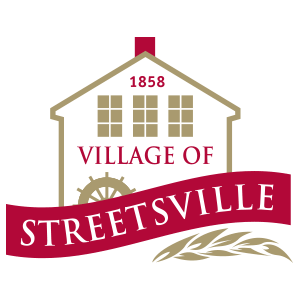
Blog post by Chantel Tesolin
Another day, another dollar. The expression should be another day, another $1.0275, because on July 30th, the Bank of Canada announced that it would be holding the overnight rate at 2.75%, maintaining the cut rate since March 2025. Have we piqued your interest? Because the bank certainly has in the years since the pandemic. Let’s have a little blast from the interest-rate past. Back in 2020, in the good old days for spending, the Bank of Canada went ‘chop, chop timber’ to interest rates, lowering them to 0.5% to prevent economic stagnation. Then, as the economy started to heal its broken wings, inflation soared (pun not intended, but definitely welcome), reaching a rate of 8.1% in 2022. The Bank responded with hikes of 5.25% (I shudder just thinking about it) for over a year. Thankfully, inflation fell to the ideal 2%, and 5 rate cuts later, we’ve landed here. Unfortunately, the inflation and interest rate didn’t live happily ever after at a reasonable rate, because that’s the kind of thing that only happens in children’s books (probably some future banker). The Bank backs up its decision by highlighting that upward and downward inflation pressures cancel out; weak demand pushes prices down, and high input costs (tariffs, rent, wages) bring inflation up. As businesses seek new markets, the cost of sourcing new suppliers adds even more upward pressure to prices. So if money talks, it’s a little hard to follow. And the one question we’re all waiting to hear the answer to is ‘What does this mean for small businesses?’.
Money can’t buy you happiness, but that doesn’t mean you can’t stay positive about it. Keeping the interest rate steady has its perks. Saving rates stay high, making it more appealing for businesses to hold cash (a.k.a. more rainy day funds and less making it rain). The lack of interest cut also narrows the disparity between Canada and the US’s interest rates, strengthening the Canadian dollar (the only time we’re happy to use more plastic than paper). This means lower import costs (good for biz). However, a stronger dollar can hurt exports by making Canadian goods more expensive abroad (bad for biz). Still, stable rates signal a healthy economy. Cutting rates usually suggests a weakened economy, which spooks investors and lowers demand. That makes interest rates certainly high and surprisingly mighty.
But it’s not all sunshine and savings. Without a rate cut, borrowing remains expensive, making it harder for businesses to service debt. Ergo, less free capital for business growth, such as expanding operations, upgrading equipment or hiring staff. On top of that stack (sadly not of cash), many small businesses still carry the weight of high expenses due to pandemic inflation on their shoulders. Underlying inflation, raised supply costs, and high wages squeeze profit margins, leaving little room for new investments. So most businesses are livin’ la vida lacking growth. In our Streetsville slice of home, small businesses feel these same effects. Todd Ladner, owner of Late Bloom Ltd, a Streetsville holding company with residential and commercial property investments, states, “Higher interest rates weigh in on our decisions to acquire more property or retrofit our existing properties. Downward pressure from banks and government regulators greatly influences plans to expand our business for the betterment of our community. Every move seems to incur greater debt…not a good formula for a better economy”. Not a good formula, and as we’ve established, with too many variables for business.
While high interest rates continue to put pressure on business margins, there are still ways to navigate the challenges. Grants and funding programs can help offset development costs that might otherwise be out of reach due to borrowing constraints. Programs like Mississauga’s Designated Heritage Property Grant, OBIAA’s Digital Main Street or The Government of Canada’s Small Business Financing Program can help ease some of the burden. Our previous blog posts have highlighted just some of the available programs for small businesses. And with Streetsville’s shiny label as a Heritage Conservation District, local businesses have even more opportunities to access support, so small businesses can feel a cents of security (and hopefully of humour).
Keep your eyes peeled and your interest on the rate. The next interest rate announcement from the Bank of Canada is set for September 10, 2025, and while the current rate hold offers a sense of stability, it doesn’t mean we’re out of the economic woods just yet. Small businesses can stay tuned for a few indicators that could influence the Bank’s next move. If inflation starts creeping up again – thanks to rising wages, supply chain pressures, or global economic shifts – the Bank may lean towards a rate hike. On the other side of the bill, if consumer spending cools, the pressure to lower rates could resurface. Movements by the U.S. Federal Reserve may also play a role, especially if interest rate gaps between the two countries start to widen. Another coin in the piggy bank is employment data. If job growth falters or unemployment rises, the Bank may be more inclined to take a supportive stance to stimulate the economy. The bottom line (as business owners and bankers are familiar with), is that business owners should stay informed on economic trends to better plan financing and investing decisions around whatever comes next. After all, we’re all just a small business in this big, wide economy.
All in all, there are pros and cons to this new development (or lack thereof) in the policy rate. While high borrowing costs and tight margins remain a reality for small businesses, opportunities still exist for those willing to adapt. Tap into funding programs, explore local incentives, and keep your eyes to the ground for the next BoC move. Time is money, so we won’t take up too much more of it. While money may not grow on trees, with the right support, small businesses can still plant the seeds for sustainable growth.
References:
-
- https://www.bankofcanada.ca/2025/07/fad-press-release-2025-07-30/
- https://floatfinancial.com/blog/how-bank-of-canada-rate-cuts-impact-smbs/
- https://www.mississauga.ca/services-and-programs/building-and-renovating/heritage-properties/designated-heritage-property-grant/
- https://digitalmainstreet.ca/
- https://ised-isde.canada.ca/site/canada-small-business-financing-program/en
